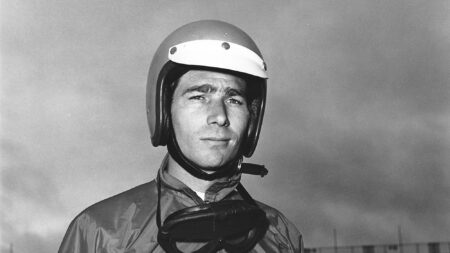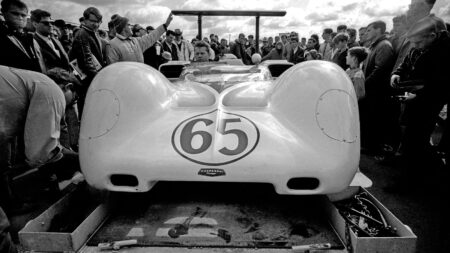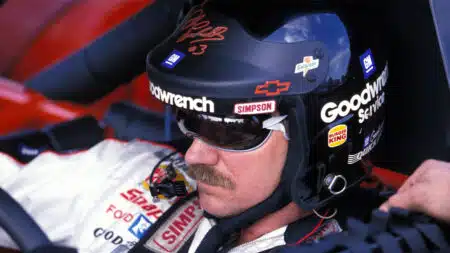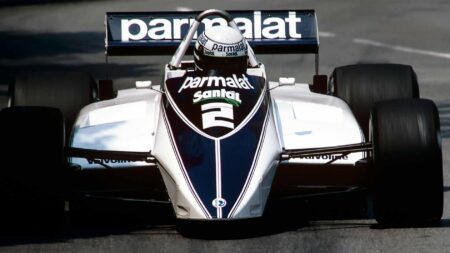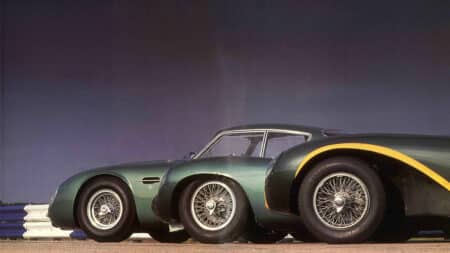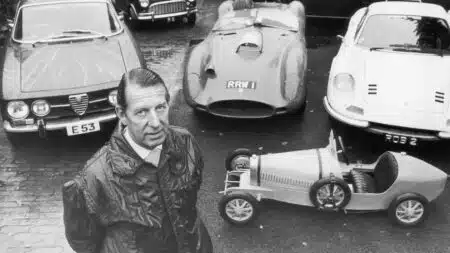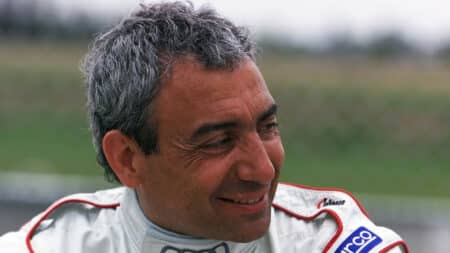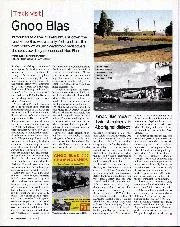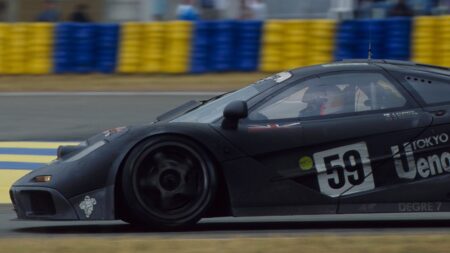Hill had no trouble getting to grips with left-foot braking. During his first race in the 2D, at Daytona, he and co-driver Jo Bonnier qualified second and led before being slowed by a variety of teething problems and finally sunk by an upright failure. There were two Chaparrals the next month at Sebring, but both of them broke early. Three starts, three DNFs. What were the chances of a lone 2D surviving 1000 kilometres at the Nürburgring?
Pretty good, as it turned out. Now sporting a distinctive snorkel over the cockpit to ram cold air into the engine, the Chaparral was leading when rain started falling. An agonisingly long pitstop to change tyres squandered most of a 4min cushion. And the worst was yet to come. “When I turned on the windshield wipers,” Hill says, “they immediately slipped off the attachment and started wiping the damn hood instead of the windshield.”
Then the rain stopped, and things got really bad. Mud from the track slopped onto the windshield, blinding Hill. “I knew I had to do something,” he says. “But I couldn’t risk shutting off the engine because the batteries were so small that I was afraid I wouldn’t be able to get it restarted. And I could not stop the car because crunching it into gear when the engine was running was a definite no-no.”

A famous first win came at the wheel of the Chaparral 2D in the 1966 Nürburgring race
Getty Images
So just after the Foxhole, on the slowest part of the circuit, Hill downshifted into first gear, slowed to a crawl, unlatched the gullwing door and levered himself out of the seat to reach outside the car and wipe off a small patch of windshield. Then he went on his merry way — but not before he was spotted by a camera, leading to a TV report that the Chaparral had broken and Hill was climbing out of the car.
“Someone wrote in a story recently that when I stopped in the pits at the end of that lap, the crew was packing up to leave,” Hill says. “That’s not true. I didn’t stop in the pits. I had no reason to. But they were packing up when I tore past.”
The Chaparral went on to score its first win on foreign soil. But Le Mans was a disaster, so the 2D was shelved and work began on its successor.


